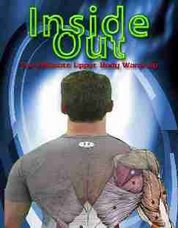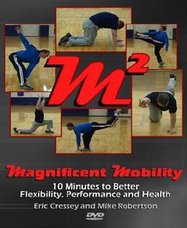Many rehabilitation "experts" would have you believe that if you strengthen your scapular retractors/depressors and stretch a little, your kyphotic posture problems would vanish. This is far from the truth. Instead of focusing on the true culprit in many cases (e.g. an anterior pelvic tilt), they focus only on the problem, not the actual cause of the problem. This local approach may work in some instances, but by failing to address the true cause, the problem will usually reoccur once rehabilitative exercise has ceased.
Anterior pelvic tilt is quite often the culprit. When you have a severe anterior pelvic tilt, the upper body has a tendency to overcompensate. Think about your spine as an "S" that must be equal on both the top and bottom. If the bottom half of the S is small and thin, the upper part will be small and thin as well. This is how a normal spine should look. However, if the bottom part of the S is very wide, the top part of the S will have to be very wide as well to compensate and balance out the bottom. Therefore, you can do all the upper body exercises and stretches you want, but until you solve the problem at the hips your results will probably always be sub-par.
So what if your hips are the problem; what can you do about it? Usually people who have issues with their hips have signs of either pelvic crossed or layer syndrome. When someone exhibits an anterior pelvic tilt, the hip flexor muscles (psoas and iliacus) are usually very tight and overactive. The psoas is usually the culprit here. Since it originates from the lumbar spine, hypertonicity and tightness create an increase in anterior pelvic tilt, which then creates a disruption throughout the low body and trunk.
This overactivity causes an inhibition of the hip extensors, primarily the glutes. When the glutes are inhibited, you often see other extensor muscle groups such as the spinal erectors or hamstrings take on the added workload left over by the inhibited glutes. Think about it: how often do you hear about someone pulling their low back or hamstrings? It’s probably an everyday occurrence in some of the larger gyms. Now think about how often you hear of someone who pulled a glute… probably not often, if ever. Not only do the hamstrings and low back have to take over an increased workload, but they also tend to get tight in the process.
Last on the list, but certainly not least, is the abdominals. If their strength isn’t up to par and the low back is shortened and tight, you have an even greater increase in lordosis. So what’s the basic premise here? Stretch the hip flexors, hamstrings and low back, while working on increasing activation and strength in the abs and glutes. Decreasing your anterior pelvic tilt can go a long way in improving your upper body posture with no direct work for the upper body whatsoever.
Read More
Mike Robertson
High Octane Corrective Exercise and Performance Enhancement | www.RobertsonTrainingSystems.com
Subscribe to:
Post Comments (Atom)









No comments:
Post a Comment